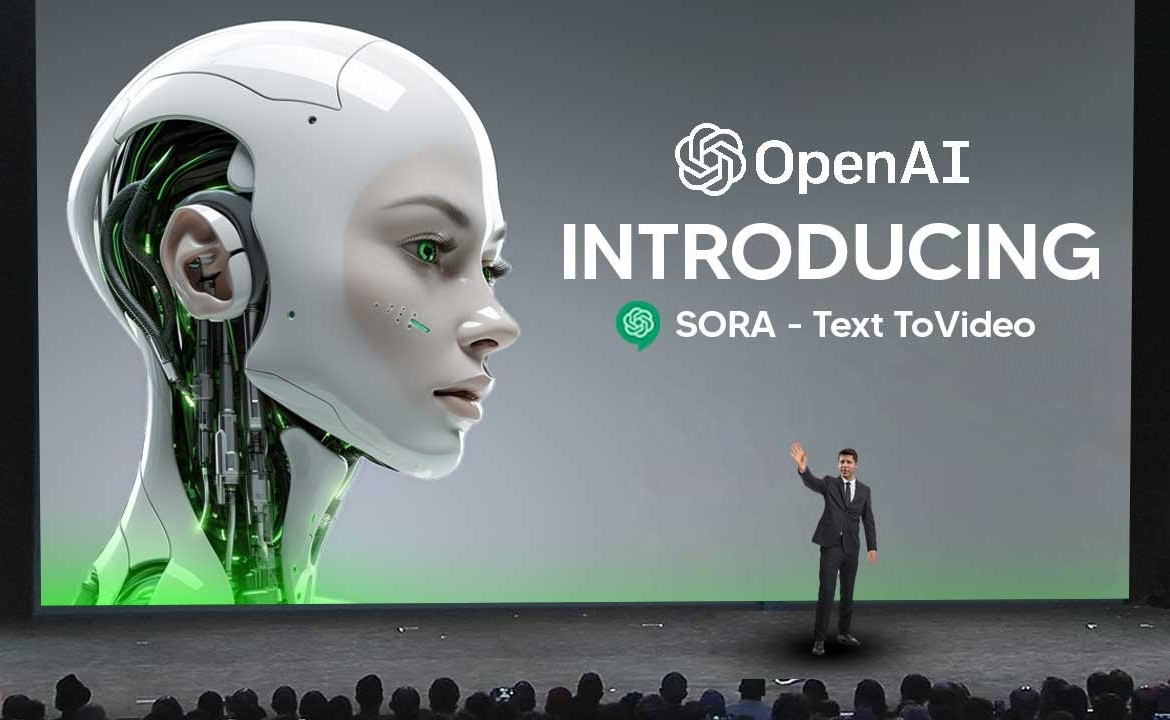
Discovering SORA by OpenAI: A Breakthrough in Video Generation
Unveiling SORA: The Text-to-Video Marvel

In artificial intelligence (AI), OpenAI has introduced a groundbreaking model known as SORA, short for Synthetic Object Rendering Architecture. SORA is designed to transform text prompts into vivid and immersive videos, marking a significant leap forward in AI innovation. Let’s delve deeper into the world of SORA and understand why it’s generating so much buzz.
Deciphering SORA’s Capabilities
SORA operates on the premise of diffusion models, meticulously crafting videos pixel by pixel from random noise images. Its transformer architecture empowers it to scale with remarkable performance, generating videos with resolutions up to 1920×1080. What sets SORA apart is its ability to understand user prompts and bring them to life with stunning realism.
The Video below is created by SORA
Prompt- A movie trailer featuring the adventures of the 30-year-old space man wearing a red wool knitted motorcycle helmet, blue sky, salt desert, cinematic style, shot on 35mm film, vivid colors.
Prompt: Drone view of waves crashing against the rugged cliffs along Big Sur’s garay point beach. The crashing blue waters create white-tipped waves, while the golden light of the setting sun illuminates the rocky shore. A small island with a lighthouse sits in the distance, and green shrubbery covers the cliff’s edge. The steep drop from the road down to the beach is a dramatic feat, with the cliff’s edges jutting out over the sea. This viewz captures the raw beauty of the coast and the rugged landscape of the Pacific Coast Highway.
Embracing Creativity and Imagination
One of SORA’s most compelling features is its capacity to unleash creativity and imagination. It can conjure scenes ranging from fantasy realms to futuristic landscapes, each imbued with vibrant characters and dynamic narratives. With SORA, users can explore new worlds, tell captivating stories, and breathe life into their visions like never before.
The Red Teaming Phase: Testing the Boundaries
Currently, SORA is undergoing rigorous testing in the red teaming phase, where OpenAI is scrutinizing its capabilities and identifying potential limitations. Collaborating with visual artists, designers, and filmmakers, OpenAI seeks to refine SORA and ensure its alignment with ethical standards and user expectations.
Frequently Asked Questions (FAQ)
- Q: How does SORA work?
- A: SORA employs a diffusion model to generate videos pixel by pixel, gradually refining them to match user prompts. Its transformer architecture enables superior scaling performance, allowing for high-resolution video generation.
- Q: What are the applications of SORA?
- A: SORA finds applications in entertainment, education, advertising, gaming, and art. It empowers users to express their ideas, stories, and emotions through immersive video content.
- Q: What are the challenges and risks associated with SORA?
- A: While SORA offers tremendous potential, it may also present challenges such as inaccuracies and misuse. OpenAI is committed to addressing these concerns and ensuring responsible usage of the technology.
- Q: How can I access or use SORA?
- A: SORA is not yet publicly available, but you can explore sample videos and technical insights on the SORA website. Stay updated on OpenAI’s announcements via their official channels.
In conclusion, SORA by OpenAI heralds a new era of video generation, blending technology with creativity to redefine storytelling and visual expression. As we eagerly anticipate its future developments, let’s embrace the boundless possibilities that SORA promises to unlock.
Sources: